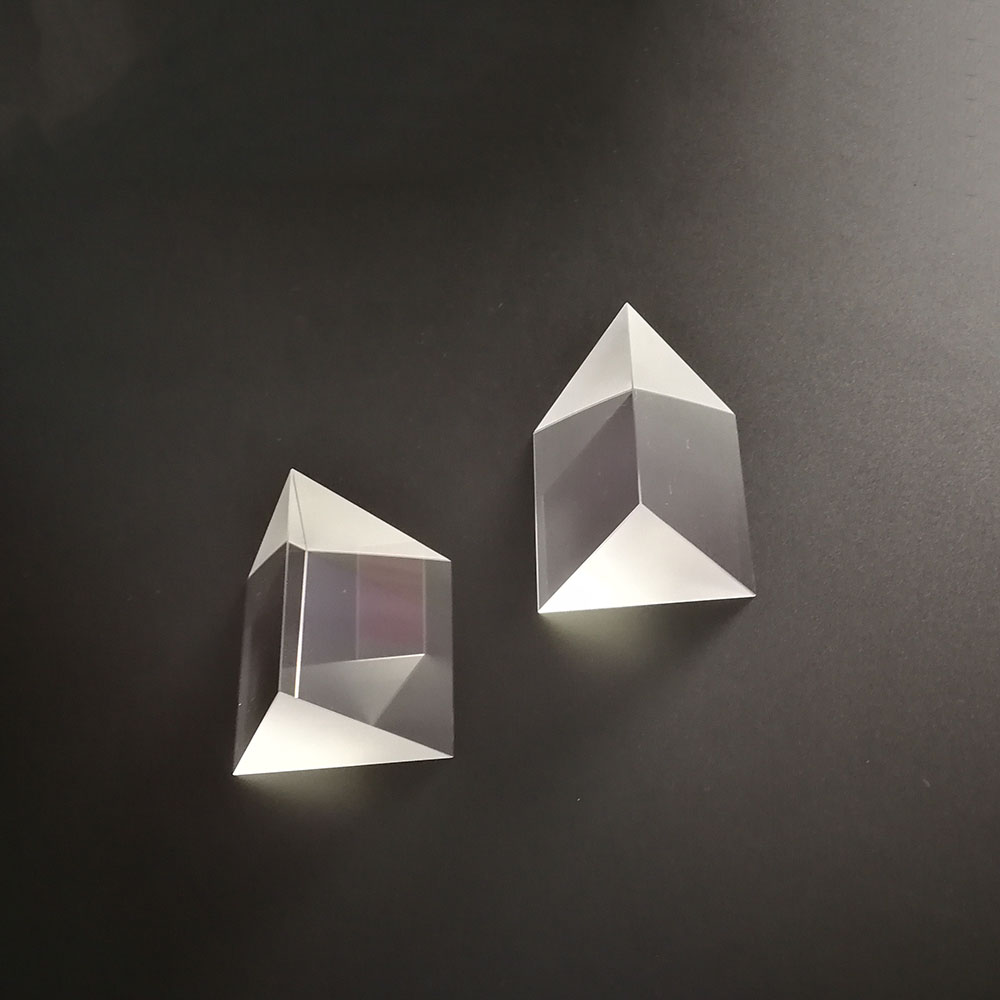ISO9001 Certified Professional Manufacturer & Supplier of Optics
+86-0431-87911611 admin@ytoptics.com
Contact us
-
 Email: admin@ytoptics.com
Email: admin@ytoptics.com
-
 Tel:86-0431-87911611
Tel:86-0431-87911611
-
 Add: 2# Automotive Innovation
Add: 2# Automotive Innovation
Jilin Province, China
Home > Products > Prisms

Equilateral Prisms
Yutai's Dispersive Equilateral Prisms, which are fabricated from H-ZF13, F4,H-K9L or infrared material.These prisms create less stray light than diffraction gratings, thereby eliminating the higher order problems typically associated with gratings.
Share this:
Dispersive prisms are typically used at the minimum angle of deviation. This is the angle for which the wavelength of interest will travel parallel to the base of the prism, and the angle of incidence is equal to the angle of refraction when measured with respect to the normal of the prism face at the respective interface. At the minimum angle of deviation, a maximum clear aperture is achieved and reflective loss of P-polarized light is reduced since the angle of incidence is nearly Brewster's angle. For S-polarization, a custom antireflective coating can be used to minimize surface reflections.
Highly recommended Equilateral Prism list from Yutai Optics:
UV Fused Silica Equilateral Prism,
H-K9L(BK7) Equilateral Prism,
F4(nd data=1.62005) Equilateral Prism,
H-ZF13(nd data=1.78472) Equilateral Prism,
CaF2 Equilateral Prism,
ZnSe Equilateral Prism,
Si/Ge Equilateral Prism.
Highly recommended Equilateral Prism list from Yutai Optics:
UV Fused Silica Equilateral Prism,
H-K9L(BK7) Equilateral Prism,
F4(nd data=1.62005) Equilateral Prism,
H-ZF13(nd data=1.78472) Equilateral Prism,
CaF2 Equilateral Prism,
ZnSe Equilateral Prism,
Si/Ge Equilateral Prism.

TALK TO US 86-0431-87911611
86-0431-87911611
Call us now!
 86-0431-87911611
86-0431-87911611Call us now!
ONLINE CHAT
 2433808388
2433808388

